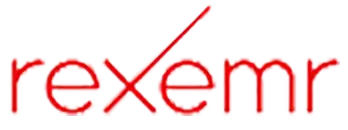Ontario’s Health Insurance Plan (OHIP) rejection codes often stem from errors in health card details or mismatched patient information. For many clinics, these errors result in delayed payments and extra administrative work. RexEMR, through its advanced billing system RexBill, has analyzed historical billing records and rejection patterns across various physicians, designing proactive solutions to address these common issues. Let’s delve into the most frequent rejection codes and how RexBill ensures they are avoided.
1. EH2 – Invalid Version Code
The EH2 rejection occurs when the version code submitted with the health card number is incorrect or outdated. Version codes are updated when a health card is renewed, reported lost, stolen, or reissued.
How RexEMR Prevents This:
- Proactive HCV (Health Card Validation): RexEMR performs health card verification at multiple stages: during patient registration, while setting up appointments, and prior to billing submission.
- If a version code is incorrect, RexBill alerts the user immediately and prevents the claim from being submitted.
- This ensures that no billing is signed off with an invalid version code, completely eliminating EH2 errors from RexEMR users.
2. VH1 – Healthcare Number is Invalid
The VH1 error signifies that the healthcare number submitted has a typo or is incorrect. This may occur due to missing digits or numbers being entered out of order.
How RexEMR Prevents This:
- Built-In Validation: RexEMR’s intelligent validation system ensures that all healthcare numbers entered are in the correct format and meet OHIP standards.
- Multi-Province Compatibility: RexEMR validates health card numbers not just for OHIP but also for other provincial health insurance programs across Canada, catching errors at the time of patient registration.
- With these measures, invalid healthcare numbers are flagged immediately, preventing VH1 errors.
3. VH8 – Date of Birth Does Not Match the Health Number Submitted
The VH8 rejection is triggered when the date of birth in the patient’s file does not match the details associated with their health card number in OHIP’s system.
How RexEMR Prevents This:
- Automatic Synchronization: During HCV, RexEMR updates the patient’s date of birth to match the OHIP record.
- Real-Time Updates: Any discrepancies in the patient’s demographic details are identified and corrected before the billing process, ensuring alignment with OHIP records.
- As a result, VH8 errors are entirely avoided in RexEMR.
4. VH9 – Health Number is Not Registered with the Ministry
The VH9 rejection occurs when the submitted health number does not exist in OHIP’s database. This could happen if a health card has not been activated, or if the number provided is fictitious.
How RexEMR Prevents This:
- Prevalidation During HCV: RexEMR checks the health number and version code with OHIP’s database at the time of registration. If the health number is not registered, the system flags it immediately, ensuring it does not proceed to billing.
- Enhanced Verification Workflows: By ensuring that all health card details are validated during registration, RexEMR eliminates the possibility of VH9 errors.
Conclusion
OHIP rejection codes like EH2, VH1, VH8, and VH9 are common pitfalls in medical billing, often leading to significant delays and extra work for clinic staff. However, with RexEMR’s intelligent billing system, RexBill, these errors are proactively addressed through robust validation and verification processes. By ensuring accuracy at every step — from registration to billing submission — RexBill not only eliminates common rejection codes but also improves efficiency and payment timelines for clinics.
Adopting RexEMR means fewer rejections, faster payments, and a streamlined billing workflow. Experience the difference with RexBill today!

